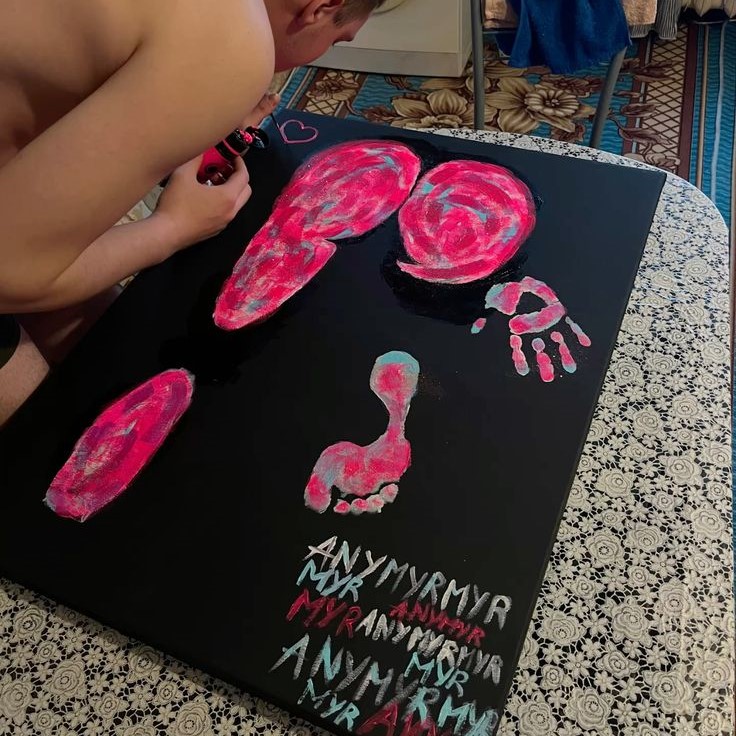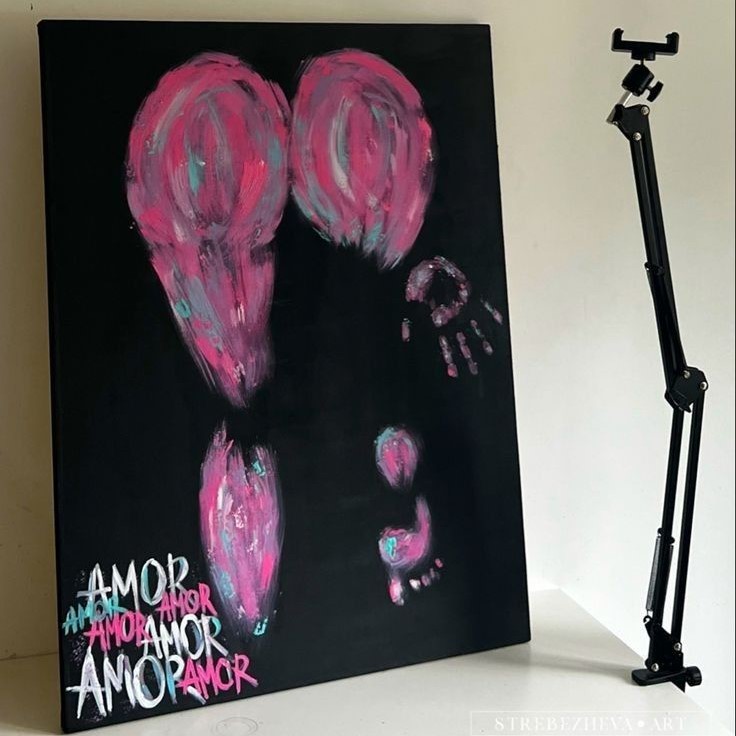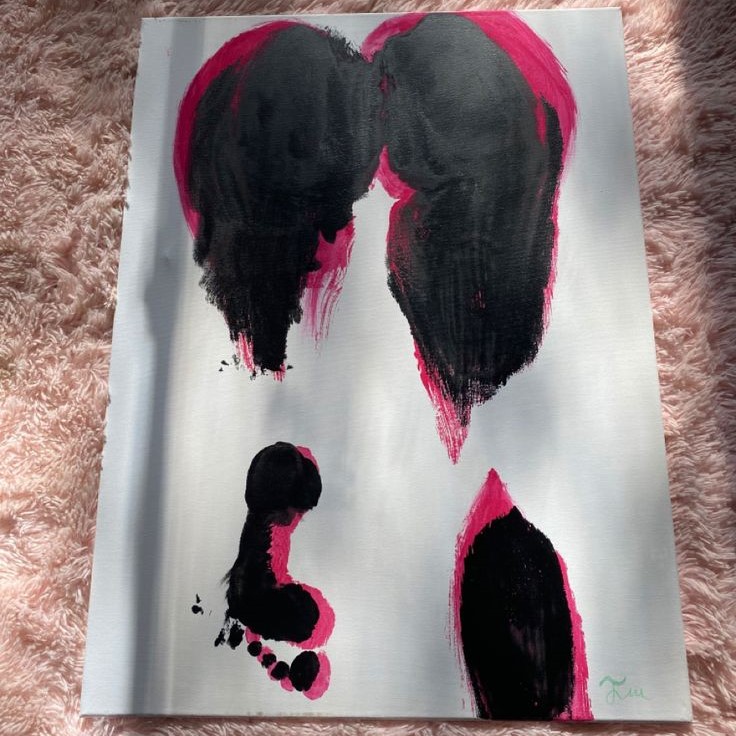Introduction to Front Body Painting Art
Front body painting on canvas is a unique and creative art form. It brings together the human body and traditional painting techniques. This contemporary art style transforms personal expression into striking visual pieces. Artists use non-toxic paints to capture impressions of the body onto a canvas. The result is a stunning blend of texture, color, and emotion.

What is Front Body Painting on Canvas?
Front body painting on canvas involves painting the front of the human body. Artists apply body-safe paint to a model’s torso, arms, or face. The painted area is gently pressed against the canvas to create an impression. These impressions serve as the foundation of the artwork. Artists often enhance these prints with shading, details, and additional symbols. This practice celebrates the human form and its role in creating art. It allows for unlimited artistic interpretations and styles.
The History and Evolution of Body Painting as an Art Form
Body painting is an ancient practice found in many cultures. Indigenous groups used it for rituals, ceremonies, and storytelling. Over time, this tradition evolved across societies and became a form of self-expression. Modern body painting began gaining popularity in the 20th century. Artists started incorporating innovative tools and materials. Using the body as a canvas became a way to challenge conventional art norms. Today, transferring body impressions onto canvas pushes this concept further. This technique merges traditional body painting and fine art to create boundary-breaking pieces.
Tools and Materials Needed for Front Body Painting
Front body painting on canvas requires specific tools and materials. Proper preparation ensures a smooth creative process. Artists must select safe and reliable items for both the model and artwork. Below are essential tools and materials for successful body painting.
Canvas Types Suitable for Body Prints
Choosing the right canvas is critical for body printing. It must be durable and textured appropriately. Smooth canvases work well for detailed prints, while rough ones add character. Sizes vary based on the artist’s vision, but larger canvases allow more dynamic compositions. Pre-stretched and framed canvases are preferred for easier handling and long-lasting artwork.
Body-Safe Paints and Their Applications
Using paints designed for the skin is mandatory in front body painting on canvas. Acrylic paints must state non-toxic and body-safe certifications. Water-based paints are gentle and easy to remove after use. They dry quickly and produce vivid colors. Always test paint on a small skin patch to avoid irritation. Metallic and fluorescent paints add creative flair, enhancing the visual impact of prints.
Brushes, Sponges, and Other Essential Tools
Artists rely on brushes and sponges to apply paint accurately. Sponges are ideal for covering large areas uniformly. Brushes help with detailed designs, edges, and highlights. Choose soft brushes to avoid discomfort during application. Additional tools like mixing palettes and paint trays simplify paint preparation. Towels and wipes are essential for cleaning the model and correcting errors.
Techniques for Creating Front Body Paintings
Preparing the Body and Canvas
Preparation is key to creating stunning front body paintings on canvas. Start by ensuring the model’s skin is clean and free from oils or lotions. This helps the paint adhere properly. Moisturize dry areas with a light, non-greasy lotion, but avoid the areas to be painted.

Set up your workspace with ample light and ventilation. Position the canvas securely on an easel or flat surface. Place protective sheets around your working area to prevent paint spills. Make sure all tools, paints, and cleaning materials are within easy reach.
It’s essential to involve the model in the preparation process. Discuss the design and choose a comfortable pose for them. This will make the entire project smooth and enjoyable.
Step-by-Step Guide to Making a Body Print
- Apply the Paint: Use brushes or sponges to paint directly onto the model’s skin. Work in sections to apply a uniform coat. Use multiple colors for depth and variety.
- Test the Print: Before pressing on the canvas, do a quick test on paper. This ensures the paint coverage is even.
- Make the Impression: Guide the model to press the painted area gently onto the canvas. Apply light pressure to ensure all paint transfers evenly.
- Lift Carefully: Slowly lift the model away from the canvas to reveal the print. Avoid smudges or uneven textures.
- Enhance the Design: Once the print dries, add details, shading, or symbols for artistic enhancement. This step personalizes the artwork.
Tips for Shading and Adding Details
- Layer Colors Gradually: For depth, apply lighter shades first, followed by deeper tones.
- Use Fine Brushes: For intricate designs, fine brushes provide more precision and control.
- Experiment with Brushes: Use fan or angle brushes for blending and unique effects.
- Blend For Realism: Blend edges softly to create a natural, lifelike impression.
- Details After Drying: Allow the first paint layer to dry before adding details. This avoids mixing colors.
With these techniques, creating front body paintings on canvas becomes an exciting and rewarding process. It allows for a blend of creativity and technique that truly celebrates the art form.
Artistic Inspiration and Styles in Front Body Painting
Front body painting on canvas is a diverse and expressive art form. Artists explore various inspirations and styles to create unique and eye-catching designs. These choices reflect personal, cultural, and thematic influences. Understanding these inspirations can help artists convey deeper meaning in their work.
Popular Themes and Motifs Used in Body Prints
Themes and motifs play a vital role in front body painting. Common choices include:
- Nature and Landscapes: Flowers, trees, and natural elements add harmony and beauty to the prints.
- Abstract Patterns: Swirls, geometric shapes, and lines create bold and modern designs.
- Emotion and Expression: Artists use colors and shapes to evoke feelings and moods.
- Cultural Heritage: Tribal designs and traditional symbols showcase the rich history of body art.
Selecting the right theme sets the tone of the artwork, making it more engaging and relatable.
Combining Abstract and Realistic Styles
Mixing abstract and realistic styles grants flexibility in creating memorable body prints. Artists layer vibrant abstract shapes with realistic touches like shadows or facial features. This combination blends creativity with detail for captivating compositions.

- Abstract Base: Start with bold colors and shapes as the foundation.
- Realistic Overlays: Add lifelike textures, shading, or small details.
- Dynamic Balance: Create contrast by merging soft and sharp elements.
This technique allows artists to capture imagination while maintaining visual depth.
Cultural and Symbolic Elements in Body Art
Cultural and symbolic art adds profound significance to body painting creations. Many artists integrate traditions and storytelling into their designs. Examples include:
- Tribal Symbols: Native designs highlight heritage and identity.
- Mythical Imagery: Dragons, gods, or folklore characters share ancient tales.
- Spiritual Icons: Symbols like mandalas or religious signs convey universal themes.
- Regional Colors: Specific palettes represent cultural or geographic influences.
Including cultural elements strengthens the bond between the viewer and the artwork. It offers a meaningful connection that goes beyond aesthetics.
Challenges and Solutions in Body Painting on Canvas
Body painting on canvas offers unique creative opportunities. However, artists often face technical and practical issues. Understanding these challenges and finding solutions ensures better results.
Addressing Common Technical Issues
Technical challenges can affect the quality of body prints. Here are some common problems and solutions:
- Uneven Paint Coverage: Paint can look patchy or fail to transfer evenly. Solve this by applying paint with sponges for uniformity.
- Smudges During Printing: Smudges ruin the print’s clarity. Use firm yet delicate pressure to make clean impressions.
- Canvas Texture Interference: Some canvases have textures that distort body prints. Choose smoother canvases for accuracy.
- Drying Time: Slow drying can delay progress. Use quick-drying paints to speed up the process.
- Limited Details or Definition: Fine details may blur in prints. Enhance precision by shading or retouching after prints dry.
Ensuring Paint Safety and Comfort for Models
Model safety and comfort are essential in body painting. Artists must consider these factors:
- Use Skin-Safe Paints: Always select non-toxic and body-safe paints to avoid skin irritation.
- Conduct Patch Tests: Test the paints on a small skin area before full application.
- Temperature Control: Painting can take time. Maintain a comfortable environment for your model.
- Choose Soft Brushes: Avoid hard brushes that may scratch or irritate the skin during application.
- Work at a Steady Pace: Take breaks to ensure the model feels relaxed throughout the session.
Preserving and Displaying the Finished Artwork
Preserving and displaying body prints requires effort to maintain their quality. Here’s how:
- Seal the Artwork: Apply a clear acrylic sealant to protect the print from fading or peeling.
- Frame for Durability: Use professional framing to improve the print’s longevity.
- Store Properly: Keep the artwork in a dry, dust-free environment to prevent damage.
- Avoid Direct Sunlight: Sunlight can cause colors to fade. Display pieces in controlled lighting areas.
- Document Your Work: Take high-quality photos to capture and share your creation.
By tackling these challenges thoughtfully, artists can elevate their front body painting creations. Success lies in preparation, safety, and proper care.
Famous Artists and Iconic Works in Front Body Painting
Front body painting on canvas has been shaped by remarkable artists and their works. These pioneers and contemporary creators have elevated this art form into mainstream recognition. Additionally, exhibitions and events continue to spotlight the evolution and impact of body art.
Pioneers in the Art of Body Prints
Early innovators in body printing established the foundation for this art form. They experimented with combining human anatomy and traditional painting on canvas. Some notable pioneers include:

- Yves Klein: Klein developed “Anthropometry,” using live models as living brushes.
- Rebecca Horn: Known for incorporating body extensions and impressions in her paintings.
- Carolee Schneemann: Schneemann explored body-based art to challenge societal norms.
These artists challenged art conventions, creating groundbreaking works that redefined artistic boundaries.
Showcasing Contemporary Front Body Painting Artists
Modern artists continue to push the creative limits of front body painting. They blend technical skill with bold themes. Some contemporary talents include:
- Emma Fay: A British artist renowned for intricate body-painted illusions.
- Craig Tracy: His works showcase seamless integration of human forms and canvas paintings.
- Alexa Meade: She specializes in optical illusions where models merge with painted settings.
These artists bring fresh perspectives, often combining abstract, realistic, and cultural motifs in their pieces.
Notable Exhibitions and Events Featuring Body Art
Exhibitions and events play a key role in promoting front body painting worldwide. These platforms allow artists to showcase their creativity to broader audiences. Key examples include:
- World Bodypainting Festival: Celebrates body art’s diversity, drawing artists and enthusiasts globally.
- Art Basel: Features innovative body art alongside contemporary art forms.
- New York Bodypainting Day: Unites artists for live demonstrations and public displays.
Such events highlight the versatility and cultural relevance of body art today. They inspire both emerging and veteran artists to explore this evolving medium.
Exploring the Impact of Front Body Painting on Modern Art
How Body Painting Challenges Traditional Art Boundaries
Front body painting on canvas redefines artistic norms. It combines the human form with classic painting methods. This fusion blurs the line between artist, medium, and artwork. Unlike traditional art, the process uses the body as both tool and subject.
This technique challenges the static nature of traditional painting. It adds movement, intimacy, and depth to artwork. The human body’s curves and textures create dynamic compositions. Each print becomes a collaboration between the artist and the model.
Moreover, body painting jumps between the realms of fine art and performance. The act of creating a print often serves as art itself. It invites observers to witness the transformation from body to canvas. In this way, body painting transforms art into an experience rather than just an object.
Body Art as a Form of Personal Expression
Front body painting provides a powerful platform for self-expression. It allows models and artists to share their stories. Every print reflects emotions, identity, and perspectives through visual elements. The body becomes a living canvas for personal narratives.
Artists often use colors and patterns to depict emotions. Bright hues may represent joy, while darker tones reflect introspection. Moreover, themes like strength, resilience, or freedom emerge through symbolic designs.
For the model, participating in body painting is often empowering. They see their body transformed into part of the artwork. This process fosters confidence and a deeper connection to self-image. Combined, the artist and model create unique pieces filled with meaning.
The Role of Front Body Painting in Art Therapy and Healing
Body painting serves as a therapeutic tool for emotional and physical healing. Art therapy allows individuals to explore inner feelings and reduce stress. With body painting, the tactile process impacts the mind-body connection directly.
For trauma survivors, body painting can rebuild a sense of safety in their own skin. It also encourages self-acceptance and the celebration of individuality. By painting or modeling, participants reconnect with their physical presence in meaningful ways.
In healthcare, body painting promotes relaxation and creative expression. It is used in stress management workshops or hospital programs. Activities often center on self-exploration, leading to increased emotional well-being.
Front body painting’s tangible, transformative techniques give it a unique position in modern art therapy practices. It helps individuals heal, discover, and express themselves profoundly.
Tips for Beginners Getting Started with Front Body Painting
Front body painting on canvas is an exciting art form. Beginners can explore their creativity while learning valuable techniques. Starting with the right approach and mindset ensures a successful journey into this unique art style.
Essential Advice for First-Time Artists
- Start with Simple Designs: Choose basic patterns or motifs for your first projects. Simple shapes help you focus on technique.
- Use Body-Safe Paints: Always select non-toxic, skin-safe paints. Test the paint on a small skin area first.
- Practice on Paper First: Try designs on paper or a flat surface before working on a model.
- Prepare the Workspace: Keep your area organized and well-lit. Use protective sheets for easy cleanup.
- Engage with Your Model: Communicate openly with your model. Explain the process and ensure their comfort.
- Be Patient: Take your time to learn the process. Patience leads to better results and growth.
Common Mistakes to Avoid
- Skipping Preparation: Avoid starting without prepping the model’s skin and canvas. Clean skin ensures good adhesion.
- Neglecting Paint Safety: Never use paints not labeled as body-safe. Harsh paints can harm the skin.
- Pressing Too Hard: Excessive pressure can smudge your design. Use controlled and even movements during printing.
- Overloading Paint: Applying too much paint can create messy prints. Use thin and even coats instead.
- Ignoring Drying Times: Rushing can lead to smudges. Allow paints to dry before layering or adding details.
- Choosing Complex Designs Early: Advanced designs may be overwhelming for beginners. Build skills gradually.
How to Build Confidence and Skill Over Time
- Practice Regularly: Consistent practice sharpens your abilities and boosts confidence.
- Learn from Tutorials: Watch videos or attend workshops for tips and inspiration.
- Experiment with Colors: Play with color combinations to find your unique style.
- Focus on Feedback: Share your work with others. Constructive feedback helps you grow as an artist.
- Document Your Progress: Take photos of each project. Reflecting on your progress motivates improvement.
- Celebrate Small Wins: Acknowledge your achievements in every project, no matter how small.
For beginners, front body painting on canvas is a rewarding experience. With the right foundation, you can express creativity and develop exceptional artistry.
